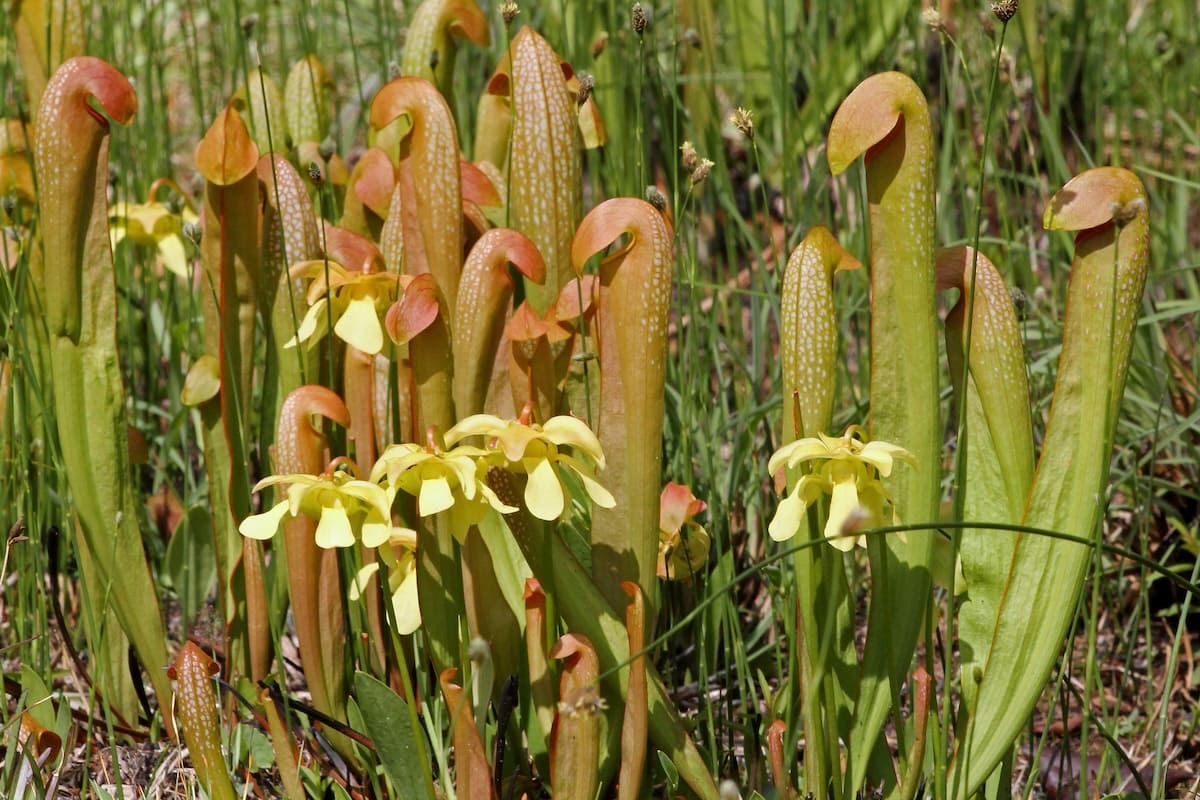Mysteries Of The Hooded Pitcher Plant Hollows

Have you ever wondered about the hooded pitcher plant and its unique features? This fascinating plant, found in the wetlands of the southeastern United States, has a lot to offer. Its hollow, tube-like structure serves as a trap for insects, which it uses for nutrients. The hooded pitcher plant's vibrant colors and sweet nectar lure unsuspecting prey into its depths. Once inside, the insects find it nearly impossible to escape due to the plant's slippery walls and downward-facing hairs. This natural marvel showcases the incredible adaptability and survival strategies of plants in challenging environments. Let's dive deeper into the mysteries of this captivating carnivorous plant.
What is the Hooded Pitcher Plant?
The Hooded Pitcher Plant (Sarracenia minor) is a carnivorous plant native to the southeastern United States. Known for its unique shape and vibrant colors, it attracts insects into its hollow, tubular leaves. Once inside, the insects find it nearly impossible to escape, becoming a meal for the plant. Let's explore some fascinating places where you can find these intriguing plants.
Where to Find Hooded Pitcher Plants
These plants thrive in specific environments. Here are some of the best places to see them in their natural habitat.
Okefenokee Swamp, Georgia
- This vast, peat-filled wetland is one of the largest in North America. The swamp's acidic waters and sunny, open spaces create an ideal environment for Hooded Pitcher Plants. Visitors can explore the area by boat or on foot, discovering these plants along the way.
Apalachicola National Forest, Florida
- Located in the Florida Panhandle, this forest is home to a diverse range of plant species, including the Hooded Pitcher Plant. The forest's wet, boggy areas provide perfect conditions for these carnivorous plants to thrive.
Francis Marion National Forest, South Carolina
- This forest near Charleston offers a mix of wetlands and pine forests. The Hooded Pitcher Plant can be found in the wetter areas, particularly in the bogs and along streams.
Unique Features of the Hooded Pitcher Plant
The Hooded Pitcher Plant has several distinctive characteristics that make it stand out among other carnivorous plants.
Hooded Lid
- The plant's hooded lid covers the opening of its tubular leaves, preventing rainwater from diluting the digestive enzymes inside. This feature also helps trap insects more effectively.
Translucent Windows
- Small, translucent patches on the plant's hood allow light to enter, confusing trapped insects. They mistake these patches for exits, exhausting themselves as they try to escape.
Digestive Enzymes
- Inside the tubular leaves, the plant secretes digestive enzymes that break down the trapped insects. This process provides essential nutrients that the plant absorbs.
Conservation Efforts
Due to habitat loss and other environmental pressures, the Hooded Pitcher Plant faces threats in the wild. Conservation efforts are crucial to preserving these unique plants.
Protected Areas
- Many of the places where Hooded Pitcher Plants grow are protected as national forests, wildlife refuges, or state parks. These protections help ensure that the plants' habitats remain intact.
Research and Education
- Scientists and conservationists study these plants to understand their needs and how best to protect them. Educational programs raise awareness about the importance of preserving carnivorous plants and their habitats.
Cultivation Programs
- Some botanical gardens and conservation organizations cultivate Hooded Pitcher Plants to reduce pressure on wild populations. These programs also provide opportunities for people to see and learn about the plants up close.
How to Observe Hooded Pitcher Plants Responsibly
When visiting areas where Hooded Pitcher Plants grow, it's important to observe them without causing harm.
Stay on Trails
- Stick to designated paths to avoid trampling sensitive habitats. Many of these areas have boardwalks or marked trails to guide visitors.
Do Not Pick Plants
- Removing plants from their natural habitat can harm local populations. Enjoy their beauty without disturbing them.
Respect Wildlife
- These plants are part of a larger ecosystem. Be mindful of other wildlife and plants in the area, and avoid actions that could disrupt their environment.
The Enigmatic Hooded Pitcher Plant
The hooded pitcher plant remains one of nature's most intriguing mysteries. Its unique structure and carnivorous habits make it a fascinating subject for both scientists and nature enthusiasts. Found primarily in the southeastern United States, this plant has adapted to thrive in nutrient-poor environments by trapping and digesting insects. The hollow structure of the plant serves as both a lure and a trap, showcasing an incredible example of evolutionary adaptation.
Understanding the hooded pitcher plant's role in its ecosystem helps us appreciate the delicate balance of nature. These plants not only control insect populations but also contribute to the biodiversity of their habitats. As we continue to study these remarkable plants, we gain insights into the complexities of plant evolution and survival strategies. The hooded pitcher plant is a testament to nature's ingenuity and resilience.

